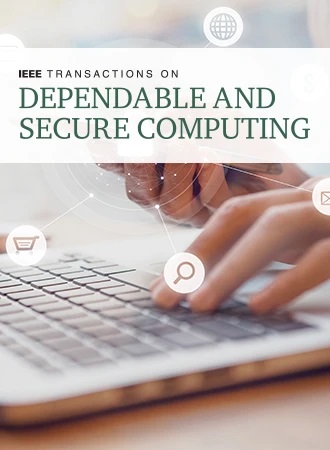改进加密货币犯罪检测:CoinJoin社区检测方法
IF 7.5
2区 计算机科学
Q1 COMPUTER SCIENCE, HARDWARE & ARCHITECTURE
IEEE Transactions on Dependable and Secure Computing
Pub Date : 2023-11-01
DOI:10.1109/tdsc.2023.3238412
引用次数: 8
摘要
本文章由计算机程序翻译,如有差异,请以英文原文为准。
Improving Cryptocurrency Crime Detection: CoinJoin Community Detection Approach
The potential of Bitcoin for money laundering and terrorist financing represents a significant challenge in law enforcement. In recent years, the use of privacy-improving CoinJoin transactions has grown significantly and helped criminal actors obfuscate Bitcoin money flows. In this study, we use unsupervised machine learning to analyze the complete Bitcoin user graph in order to identify suspicious actors potentially involved in illegal activities. In contrast to the existing studies, we introduce a novel set of features that we use to identify potential criminal activity more accurately. Furthermore, we apply our clustering algorithm to a CoinJoin-adjusted variant of the Bitcoin user graph, which enables us to analyze the network at a more detailed, user-centric level while still offering opportunities to address advanced privacy-enhancing techniques at a later stage. By comparing the results with our ground truth data set, we find that our improved clustering method is able to capture significantly more illicit activity within the most suspicious clusters. Finally, we find that users associated with illegal activities commonly have significant short paths to CoinJoin wallets and show tendencies toward outlier behavior. Our results have potential contributions to anti-money laundering efforts and combating the financing of terrorism and other illegal activities.
求助全文
通过发布文献求助,成功后即可免费获取论文全文。
去求助
来源期刊

IEEE Transactions on Dependable and Secure Computing
工程技术-计算机:软件工程
CiteScore
11.20
自引率
5.50%
发文量
354
审稿时长
9 months
期刊介绍:
The "IEEE Transactions on Dependable and Secure Computing (TDSC)" is a prestigious journal that publishes high-quality, peer-reviewed research in the field of computer science, specifically targeting the development of dependable and secure computing systems and networks. This journal is dedicated to exploring the fundamental principles, methodologies, and mechanisms that enable the design, modeling, and evaluation of systems that meet the required levels of reliability, security, and performance.
The scope of TDSC includes research on measurement, modeling, and simulation techniques that contribute to the understanding and improvement of system performance under various constraints. It also covers the foundations necessary for the joint evaluation, verification, and design of systems that balance performance, security, and dependability.
By publishing archival research results, TDSC aims to provide a valuable resource for researchers, engineers, and practitioners working in the areas of cybersecurity, fault tolerance, and system reliability. The journal's focus on cutting-edge research ensures that it remains at the forefront of advancements in the field, promoting the development of technologies that are critical for the functioning of modern, complex systems.
 求助内容:
求助内容: 应助结果提醒方式:
应助结果提醒方式:


